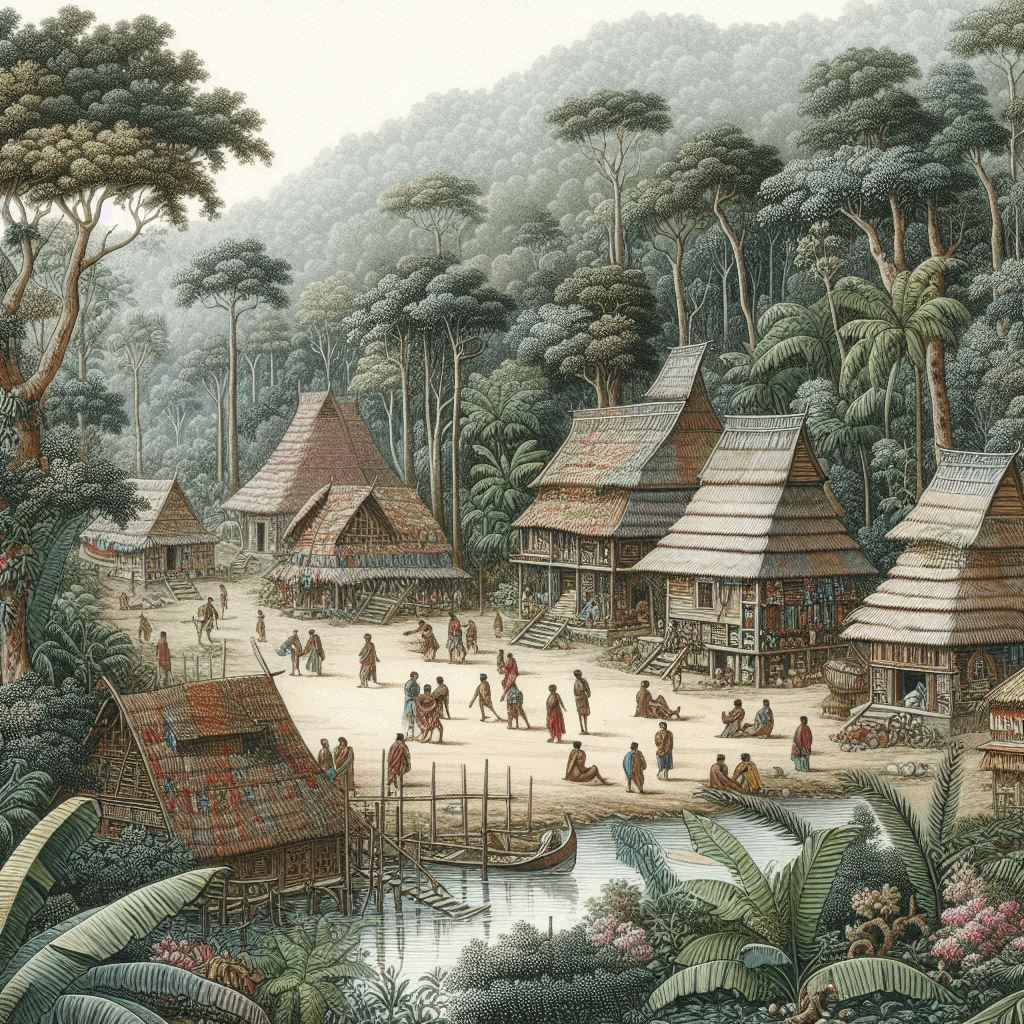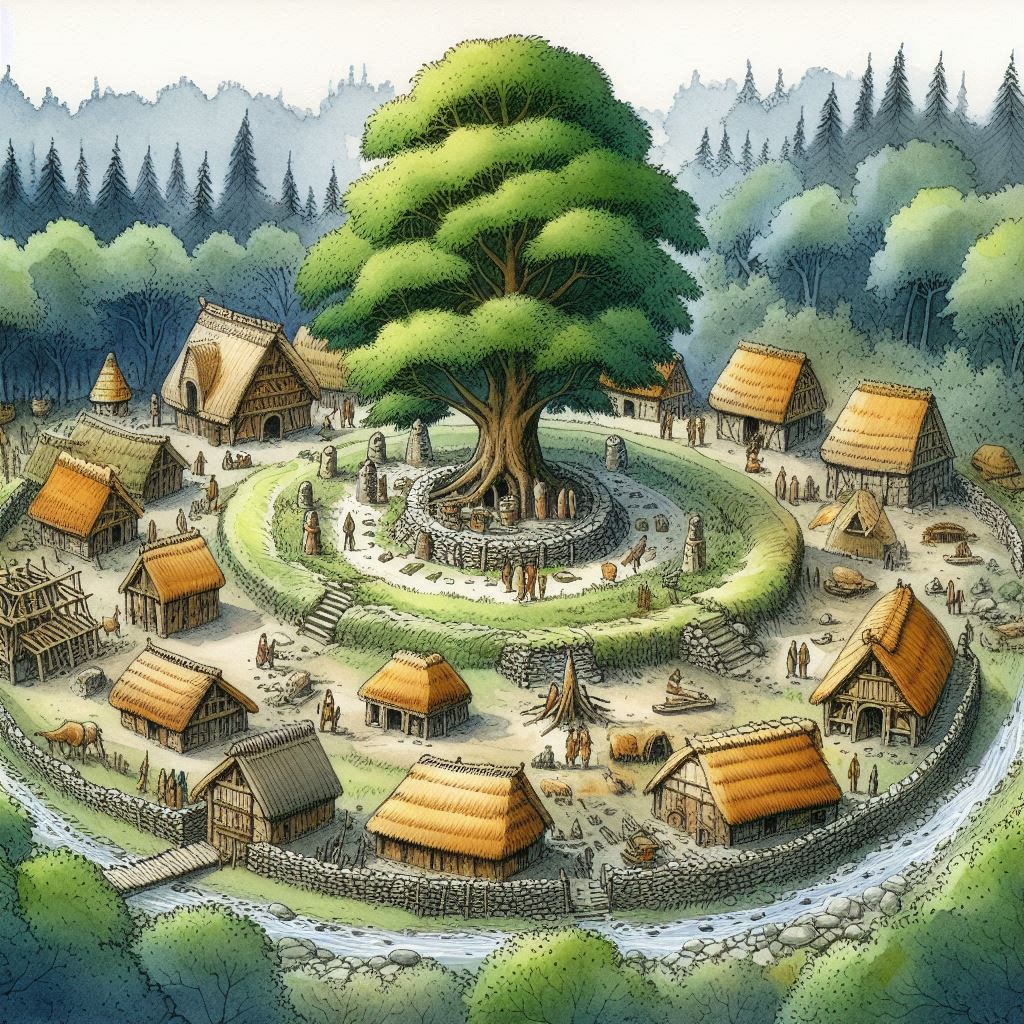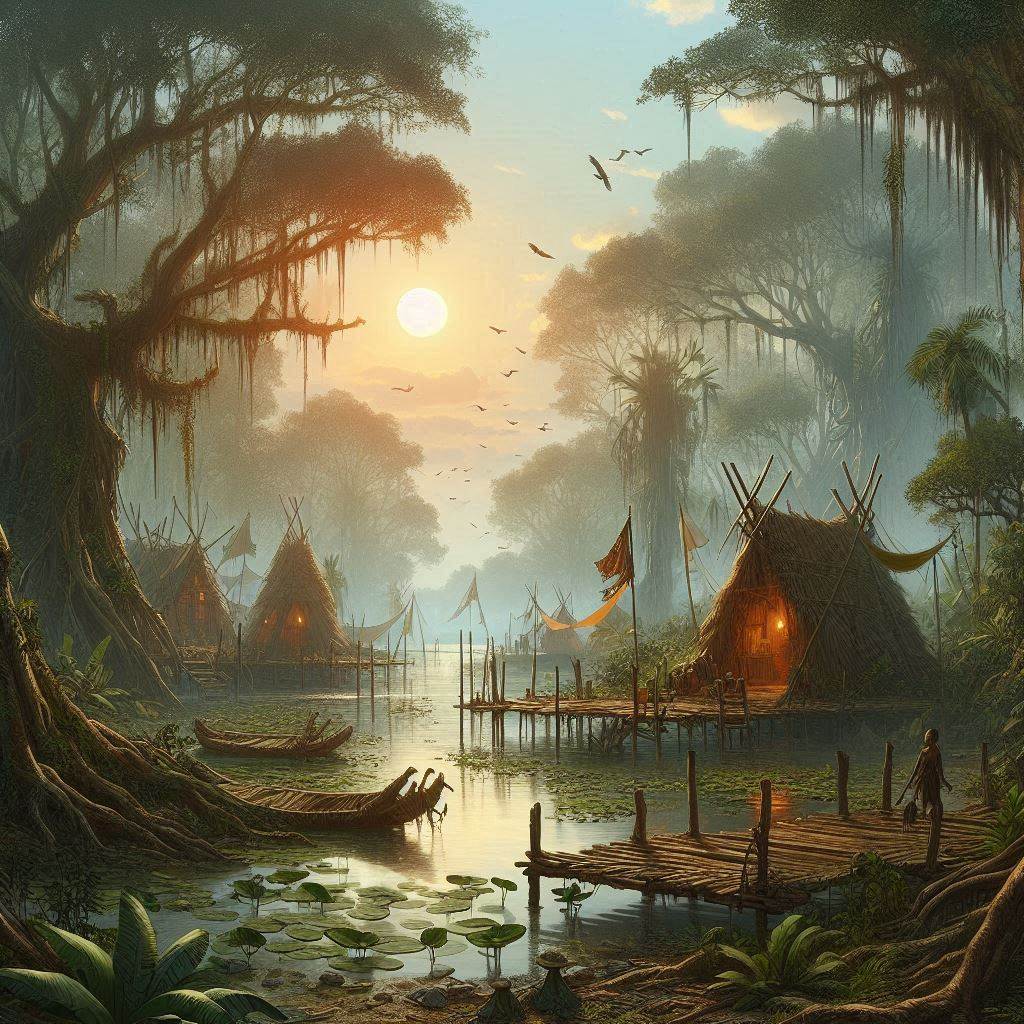Verdant culture
VERDANT SUBCULTURES
GENERAL SKILLS- Ambush
- Axes - Long
- Axes - Short
- Boat Pilot
- Butchery
- Camouflage
- Climbing
- Detect Traps
- Direction Sense
- Disguise
- Driving
- Fishing
- Fletching
- Foraging
- Hide Item
- Hunting
- Jumping
- Leatherworking
- Loading
- Man. in Fur
- Man. in S. Leather
- Poison Lore
- Rappelling
- Read Tracks
- Rope Mastery
- Rowing
- Set Traps
- Slings
- Sprinting
- Stalk & Hide
- Stilt Walking
- Swimming
- Tightrope Walking
- Tracking
- Trap Building
- Weather-Watching
- Wood Lore
- Wood-Crafts
- Woodworking
Legend
“Verdants, beings of the green lush floral domains, have given us the most outstanding legends and heroic deeds.”
Description

The verdant flora dwellers, are generally all secluded people, deeply connected to the domains they inhabit. Primarily skilled hunters, gatherers, herbalists, druids, animists, and crafters, they have lived in the green for many generations forming tight-knit, self-sufficient communities. It’s rare for a verdant child to venture to urban areas, as they prefer the familiarity and sanctity of their natural surroundings. Many verdants commune with nature spirits, further deepening their bond with the gods through flora.
Despite their independence, overarching tribal identities or alliances exist among different bands, clans, or tribes. These are often based on shared forest regions, totems, or ancestral stories. Verdant folklore is rich with tales of natures creatures, and their own origins. These stories explain the properties of certain plants and the origins of their unique abilities.
Lifestyle: Verdants live in harmony with nature, relying on it’s resources for sustenance and shelter. Their tracking, climbing, hiding, hunting, and foraging skills are unparalleled. They often form bonds with animals, either as companions, totems, or through the ability to communicate with certain creatures.
Diet: Verdant cultures have a diet that is closely tied to the forest, jungle, or swamp. They rely on a mix of hunting, gathering, and limited agriculture, focussing on wild game, fruits, nuts, berries, tubers, and leafy vegetables. The diet is often rich in plant-based nutrients and varied according to what the forest provides each season.
Traditions and Stories: Coming-of-age ceremonies involve tests of survival and skill, such as facing dangerous creatures or enduring periods alone in the wild. They practice sustainable hunting and foraging, ensuring the forest’s health is maintained. They hold rituals to honour the spirits of the woods and celebrate the cycles of the seasons.
Marriage Pattern: Their marriages are typically rooted in community and mutual respect. Ceremonies are simple yet deeply symbolic, often involving rituals that honour the forest and its spirits. Marriages strengthen alliances within and between clans.
Religion: Their spirituality centres around nature worship and the cycles of the seasons. They perform rituals and ceremonies to honour forest spirits, guided by female shamans who act as seers, healers, and spiritual leaders.
- Religious system: Nature worship: connection to the natural world, with deities representing elements or animals.
- God-Mortal Interaction: A deep connection to all living things, with spirits inhabiting every part of the forest. trees, animals, and natural forces of the forest.
- Rituals: ceremonies to ensure the forest’s health, harvest festivals, and rites of passage involving nature-based challenges. Reverence for those who first inhabited the woods.
- Impact on Society: A strong sense of community and interdependence. Respect for the forest is paramount. Religion reinforces the importance of harmony with nature and sustainability.
Skjald Ulrich
Craftsmanship: Verdants are adept at crafting items from natural materials, including intricate carvings, woven baskets, feathered ornaments, and tools made from wood and bone. Their craftsmanship is both functional and artistic, reflecting their deep connection to nature.
Clothing & Decoration: Their attire is made from wool, leather, and fur, adorned with natural elements like leaves, branches, moss, and flowers. Both genders favour long hair and braids, with men often sporting long beards.
Armor: They typically wear light armour made from leather and hide, allowing for mobility and stealth in the forest.
Weapons: Common weapons include daggers, handaxes, longbows, slings, quarterstaffs, short swords, and woodman’s axes. They might also use traps and snares crafted from natural materials.
Special Items: They create items using wood, bark, fur, leather, and feathers. These items often have practical uses and are imbued with subtle enchantments or blessings from forest spirits.
Skjald Vinotis
Time: Verdant communities follow the forest’s natural growth cycles, which include ancient trees, forest fires, animal behaviour, and celestial events.
Accomplishment and achievement: Include nurturing old woods, maintaining sacred groves, mastering woodcraft, and practicing sustainable hunting. Success is inextricably connected to forest health and communal harmony.
Authority Interaction: Leaders tend to be respected druid circles or knowledgeable tree elders with a comprehensive understanding of the forest, guiding the flock while preserving natural balance, the eldest trees, and forest spirits.
Fears & Inabilities: They have few specific fears or inabilities but may harbour superstitions about disturbing ancient trees or angering forest spirits.
Mien: Culture has a low impact on demeanor, allowing for a wide range of individual expression.
Mannerism: While connected to nature, the variety of forest environments could lead to diverse demeanors.
Prejudices: They tend to dislike urban dwellers and nobility, viewing them as disconnected from the natural world and potentially harmful to the forest.
Skjald Sigurd
General Resistance: Verdants might have natural immunity to certain ailments and toxins due to their knowledge of forest resources and their lifestyle. However, they are also exposed to disease vectors like ticks and insects.
Disease Resistance: Moderate. Living in the lush green exposes them to certain diseases, but their close connection to nature and knowledge of remedies help them build resistance.
Poison Resistance: Moderate. Their expertise in identifying and using local plants and toxins provides some resistance to poisons.
Remedies: They have an extensive knowledge of plant-based remedies and shamanic practices for healing, often relying on the forest’s bounty for medicinal purposes.
Skjald El Mary
History

Verdant cultures, as with most of the others, go all the way back to the dark ages. Were some void gardens had a plenitude of flora, able to both shelter and sustain the lives of their inhabitants, within its borders. They thus have a long history of isolation, developing unique languages, customs, and traditions. With tales of ancient forest spirits, guardians, and conflicts with outsiders who sought to exploit their woodland home.
First AgeWhen their cultural realms was uprooted and tossed all over the world, climates as well as neighbouring settlements of carious races, began to slightly influence their lifestyles. Making some even more secluded, and others more openminded. Thats why verdant cultures have quite a broad span in their inhabitants lifestyle, diets, mien, demeanour, and mannerism. But they still share their proctive attitude regarding their realms.
Second AgeWhen the whole world tilted, cracked open, and gargantuan landmasses shifted, many forests, jungles, and swamps, changed. Thus some inhabitants stood without places to call home and migrated, others adapted to the new circumstances, and some perished. Thus the 1st cataclysm only widened the span of verdant cultures.
Third AgeThe coming of the bullheaded god and the wanderer tribes changed nothing for verdant cultures. If any, it would be a slight shift of all towards being more catious about sharing skills and recipes. As especially the vular was extremely keen to learn everything and bend or improve it.
Fourth AgeWhen the deep blue tsunami swept the world, many verdant cultures was struck by disaster, but swampers the most. As the tainted waters not only created arisen at impact, but many pools, ponds, and holes became filled with tainted waters. There are actually still undiscovered resevoirs of tainted water, within the hard to reach areas or in hidden holes. So in swamp cultures the birth of arisen still occurs when unlucky adventureres pays the ultimate price.
In case verdants become aware of these tainted pools, they either neutralize them or hide and guard them against intruders. This has resulted in quite some basty fendoffs, and attacks from both arisen, liches, and vampires, so their existence and location is kept secret.
Skjald Kazumix
Cartography

While most Verdant are semi-nomadic within their territories, they skilfully navigate the dense woods, setting up temporary camps. The encroachment of other cultures or external threats like logging settlers, hostile creatures, or otherworldly forces introduces challenges to their way of life.
Skjald Valgrif
Organisation

Verdant communities are egalitarian, with leadership based on wisdom, skill, or spiritual authority. Decisions are made collectively, and there is a strong sense of communal ownership of the forest. Solitary wise individuals, or sages, offer advice and guidance to those seeking the forest’s blessings.
Skjald Ulrich
Special

Verdants possess extensive knowledge of forest plants, animals, and survival skills. They have unique tracking and hunting abilities and a deep understanding of the forest’s cycles. Their connection to nature spirits or deities is strong, often guiding their actions and decisions.
Skjald Yell'a'Beard
Last Updated on 2024-10-20 by IoM-Christian
